Marcus Thuram, Timothy Weah, and Erling Braut Håland – what do they have in common? Apart from playing as attackers, they were the sons of famous football players in the 1990s. Thuram’s dad, Lillian, is the most capped Frenchman in history with 142 international appearances for the National Team. Oh, he also has a World Cup and a European Championship medal in his home.
George, Timothy’s old man, is the only African to date to ever win FIFA World Player of the Year and the Ballon d’Or. George is currently running as the President of Liberia, making him the first-ever footballer that became a head of state in history. And last but not least, Alf-Inge, the father of Norwegian sensation Håland. Alfie’s career was not as stellar as the previous two dads mentioned, but who doesn’t remember the famous incident back in April 2001? That time, Roy Keane — Manchester United legend — notoriously planted his foot to Alf-Inge’s right knee; forcing Keane to accept a £5,000 fine and banned for the next three matches.
The father-and-son line continues in 2020 with the arrival of Giovanni Reyna. The son of Claudio — former USMNT captain and was called to four consecutive World Cups — made his Bundesliga debut last January aged at just 17 years and 66 days. Such a feat makes him the youngest-ever American to grace Germany’s top-level football since Christian Pulisic in 2016. Who is this boy? What’s so special about him? This tactical analysis will inform you about the newest American sensation.
Player profile
Gio Reyna plays as an attacking midfielder, unlike his father who played in a deeper role during his career. Reyna was spending the first part of the 2019/20 season in Borussia Dortmund’s U-19 squad before Lucien Favre called him to the first team in January 2020. After his debut, the American has never returned to playing age-group football. He even finished the campaign with 15 league appearances as well as having played in two UEFA Champions League matches against eventual finalists Paris Saint-Germain.
Favre seems to really like Reyna and is willing to give him more playing time in 2020/21. So far this season, the teenager has started five out of six league matches and has also started in both Champions League and DFB Pokal games. Reyna’s thrilling displays also has made his seniors accept a different role in Favre’s tactics. Just ask Julian Brandt or even Thorgan Hazard, both of whom have moved to central midfield and left wing-back respectively after the American’s arrival.
As an attacking midfielder, Reyna is gifted with superb spatial awareness and elite passing ability. It’s no wonder why he has made five assists from just 10 matches in 2020/21 so far – including a hat-trick of assists against SC Freiburg last month. Not a big deal for a 17-year-old, isn’t it?
Roles in build-ups
This scout report will start by analysing Reyna’s role in his team’s tactics. Favre doesn’t experiment much for his team when trying to build their attacks. Indeed, Dortmund prefer to play short via the defenders, but there are no intricate movements whatsoever. It means that all the players tend to stick in their initial positions and occupy their respective areas instead of moving freely across the pitch.
As an attacking midfielder, this lack of freedom can hurt Reyna’s playing style. However, Favre tends to use a 3–4–2–1 system. In this shape, he has two attacking midfielders who can move rather freely in their respective sides while still keeping the initial structure intact.
Reyna likes to use this bit of freedom first by dropping to the midfield. When he does so, he can help Dortmund to overload that particular area. Two possibilities can happen from this:
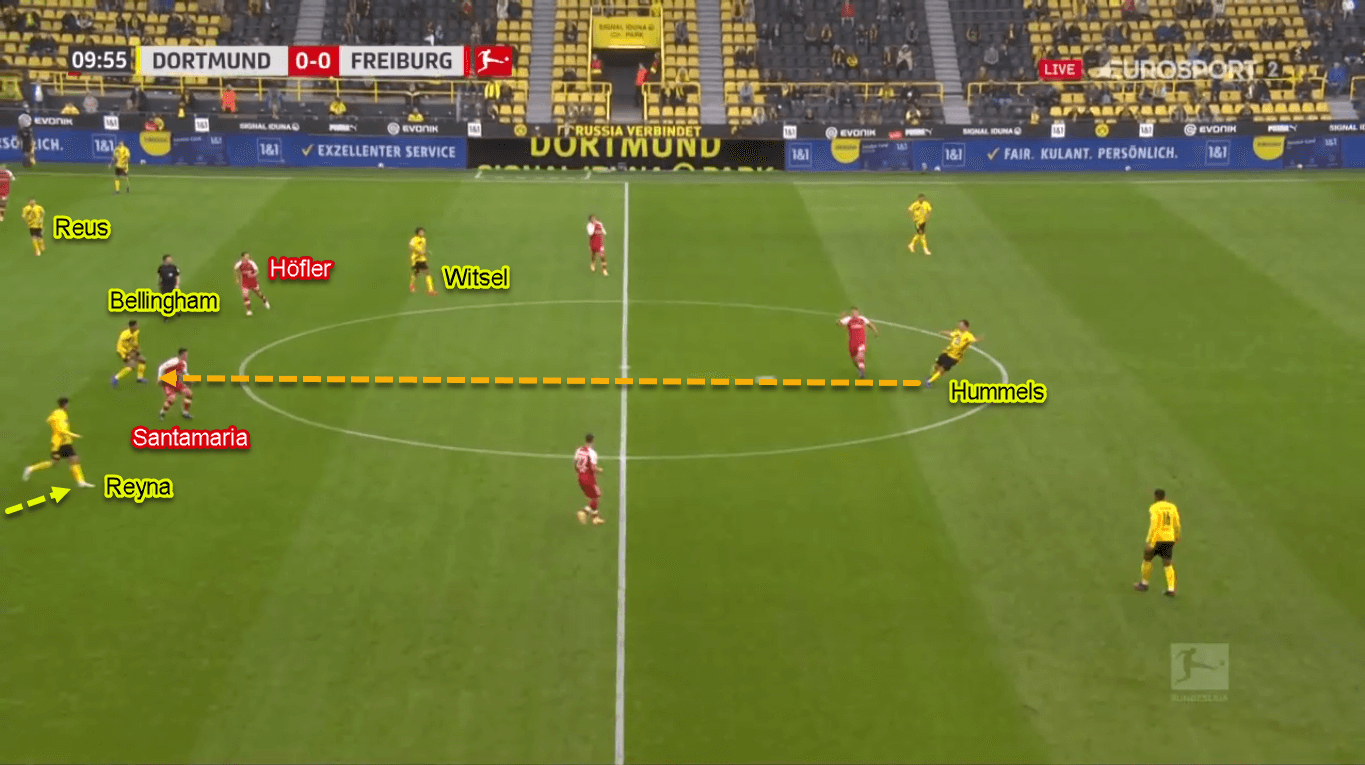
First, one of the midfield players is open and can be accessed by the defenders. Second, this can open a vertical passing lane for the striker up front. Both possibilities are important for the Black and Yellow since they have a great passer in Mats Hummels.
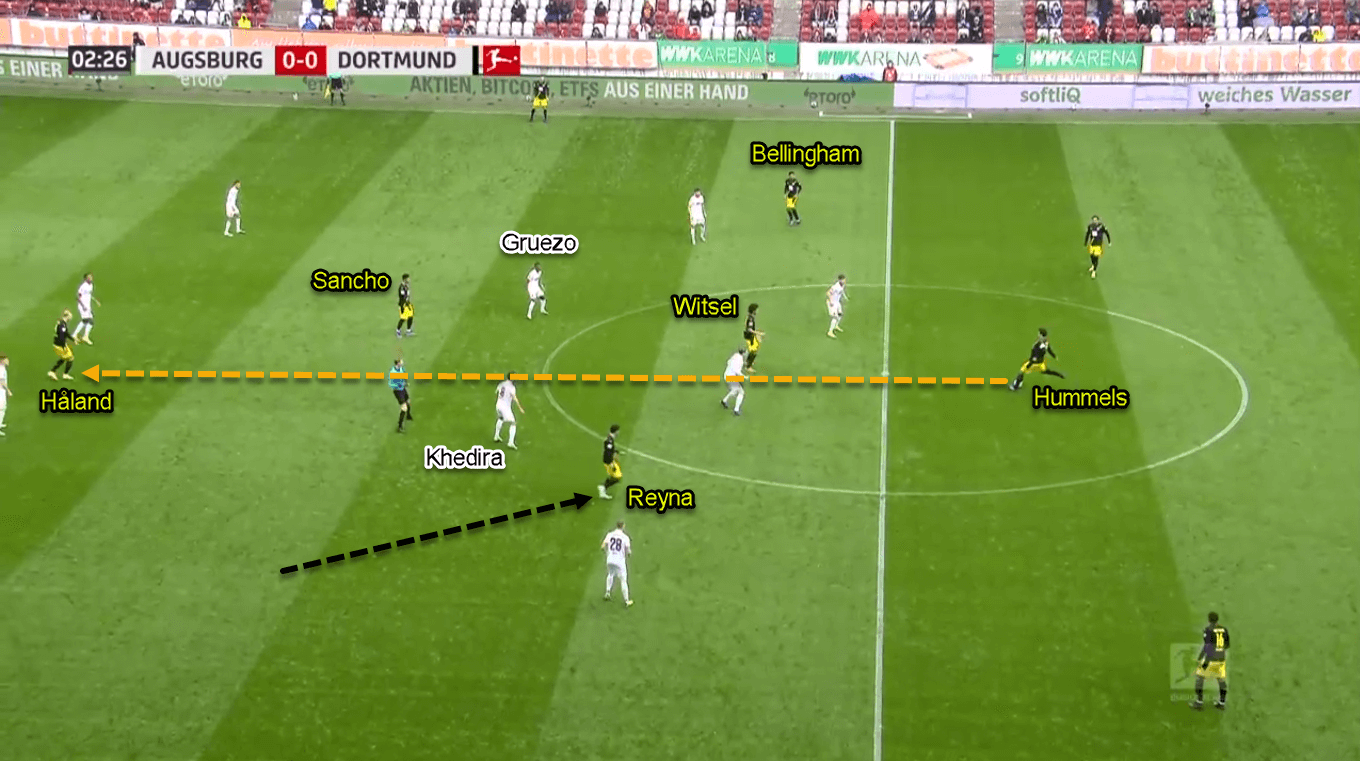
Great spatial awareness
One thing we like the most from the 17-year-old is his superb awareness of the space around him, and not just for him but also for his teammates. Having good spatial awareness means Reyna can easily find pockets of space inside the defensive block, in which he can exploit later after receiving.
The first way he accesses those space is by nature. What does that mean? It means as an attacking midfielder, he’s inclined to play in between the opponents’ defensive lines. As mentioned before, Favre tends to play with two attacking midfielders at the same time. This makes Reyna and his partner has to split the pitch and play in one side only. Such a division makes him play inside the half-space more often rather than centrally.
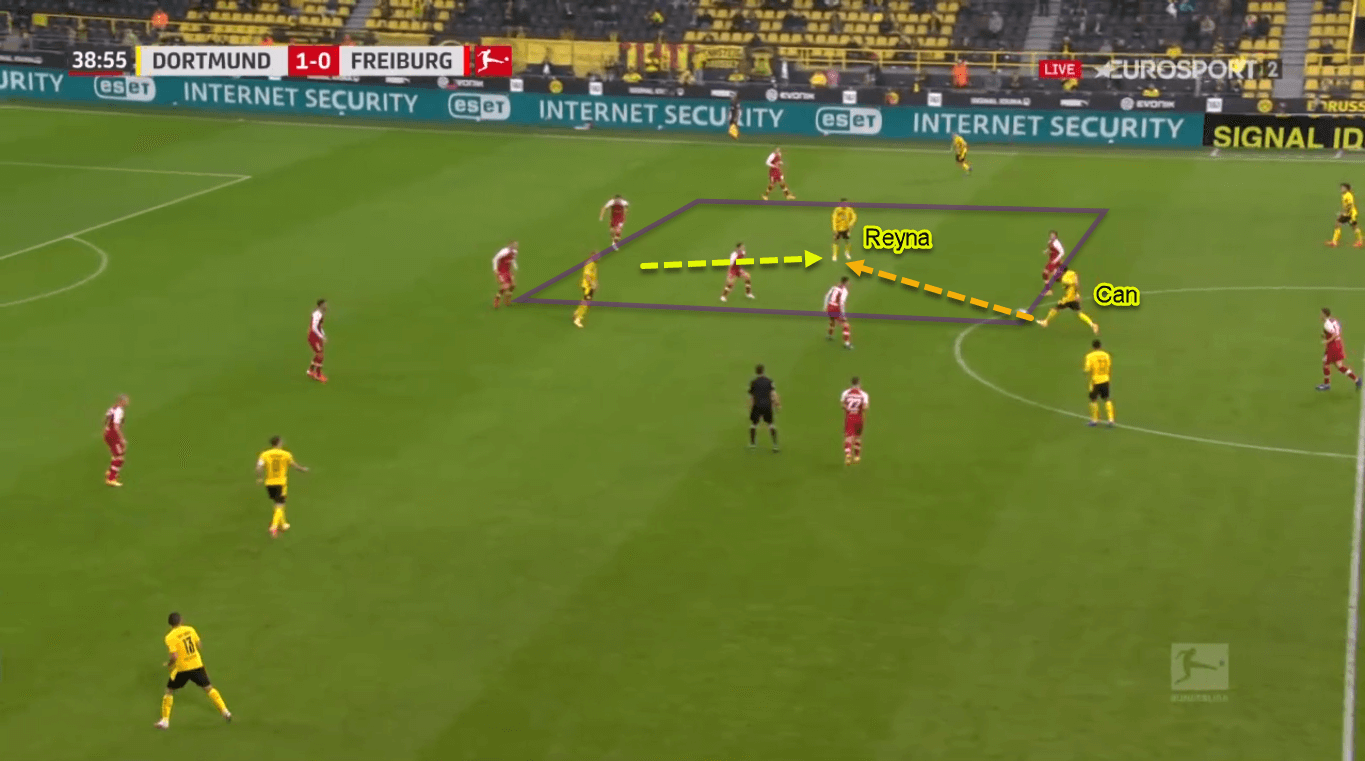
Secondly, he can access those space by moving first. That means that he can drift and/or drop to space just outside the reach of the defenders. Also, he can attack the space in between the defending players by running into there from deeper areas. His adeptness to manipulate space makes Reyna a crucial part in Dortmund’s free-flowing attacks.
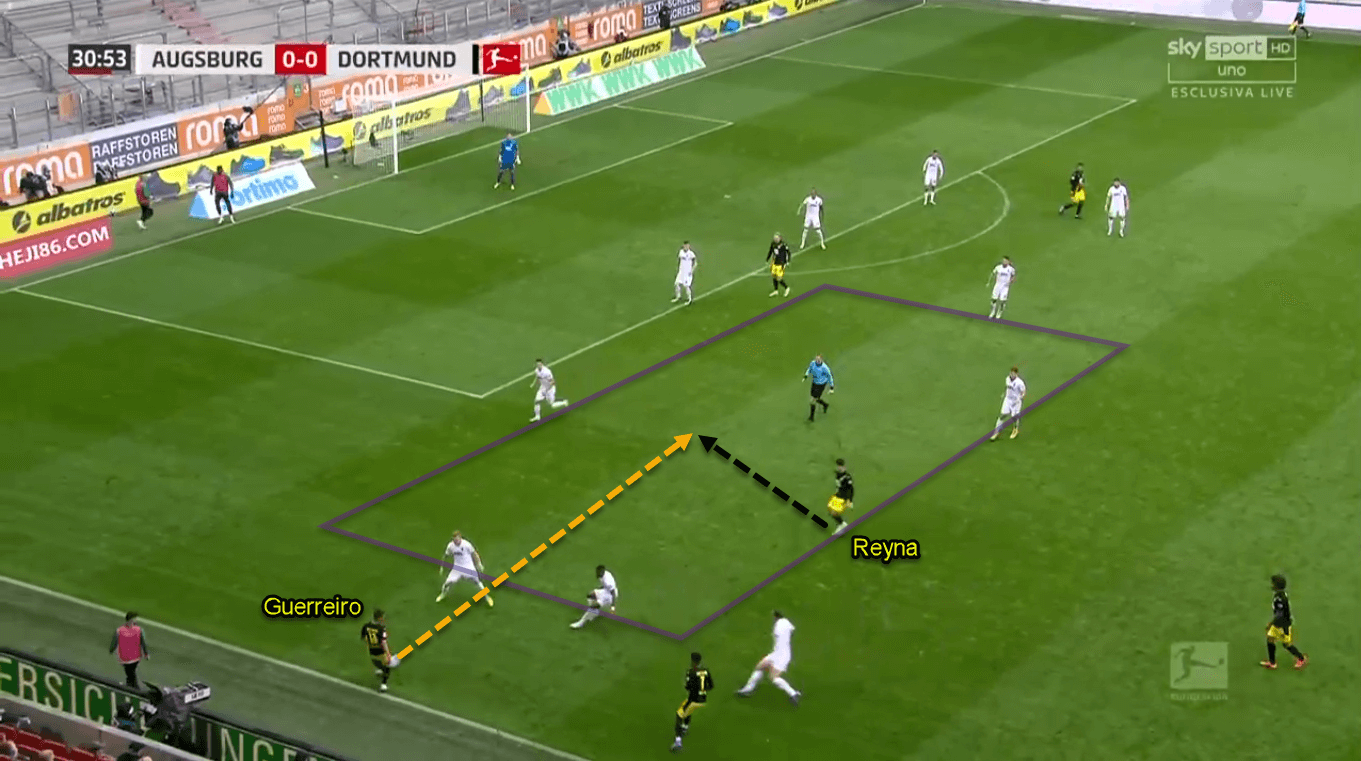
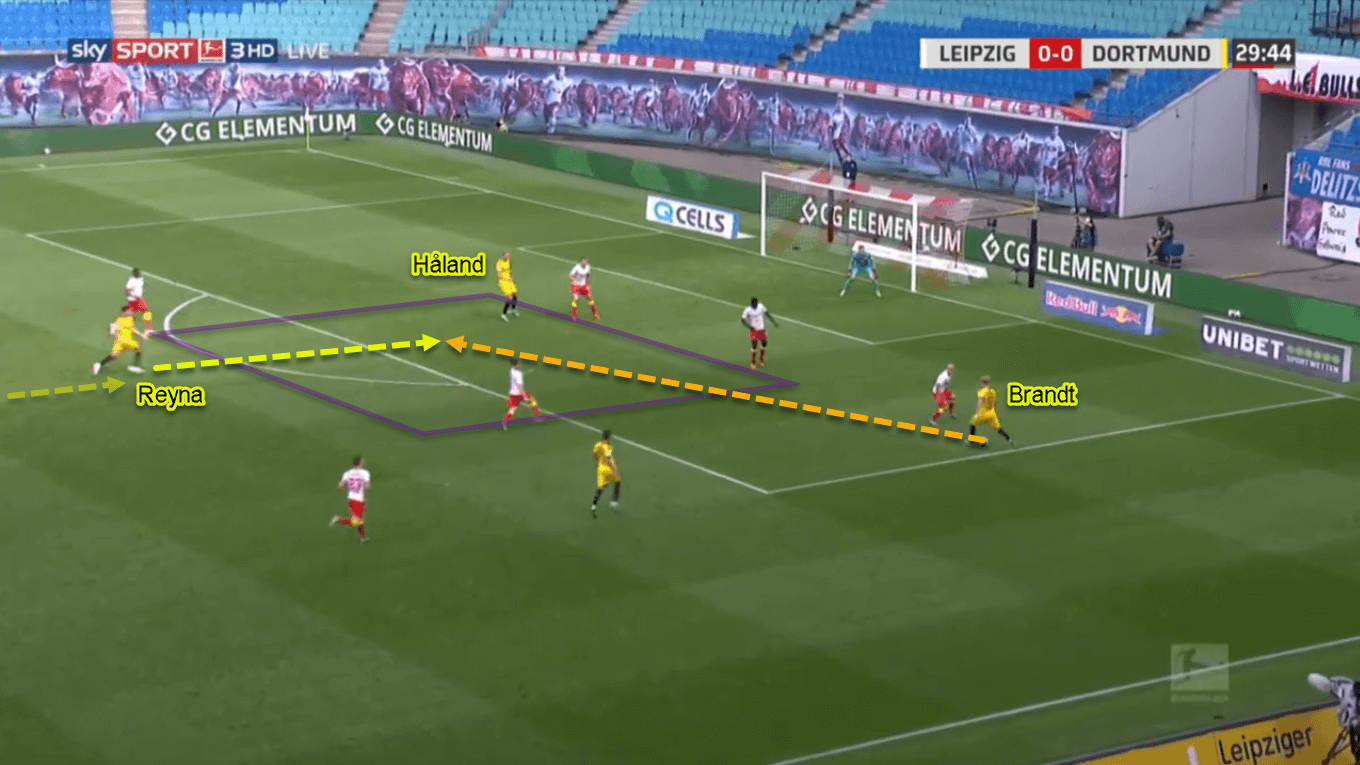
Elite passer
Not only is he blessed with a great spatial understanding, but Reyna is also gifted with amazing passing ability. This is an important feature for Dortmund’s open-plays as well as their set-piece situations. In open-plays, there are various ways on how this particular ability can be used, as we shall now explore.
First, in deeper areas. As mentioned previously, Reyna has a tendency to drop into the midfield and help overload the area. It’s just not for the sake of overloading, though. His presence is also useful when Dortmund try to move their attacks from one flank to the other quickly. If we look at the statistics, 75% of Die Schwarzgelben’s attacks this season come from the wide areas. Such a number underlines the importance of Reyna in bridging his team attacks in deeper areas.
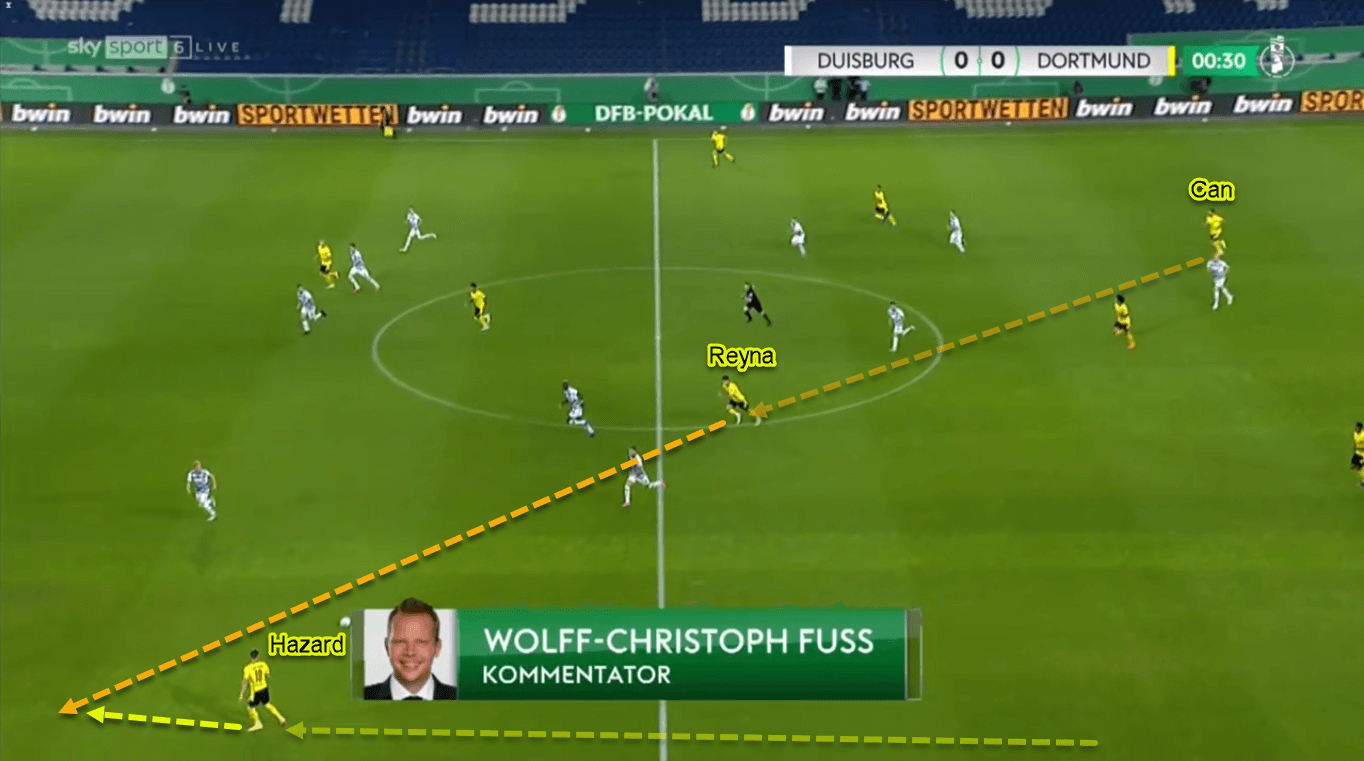
Secondly, we can see it in the middle third. As a flank-focused team, Dortmund tend to create chances through their wing-backs. That means Reyna has an important role to set up the overlapping players in the flank so the receiver can send incisive crosses into the box.
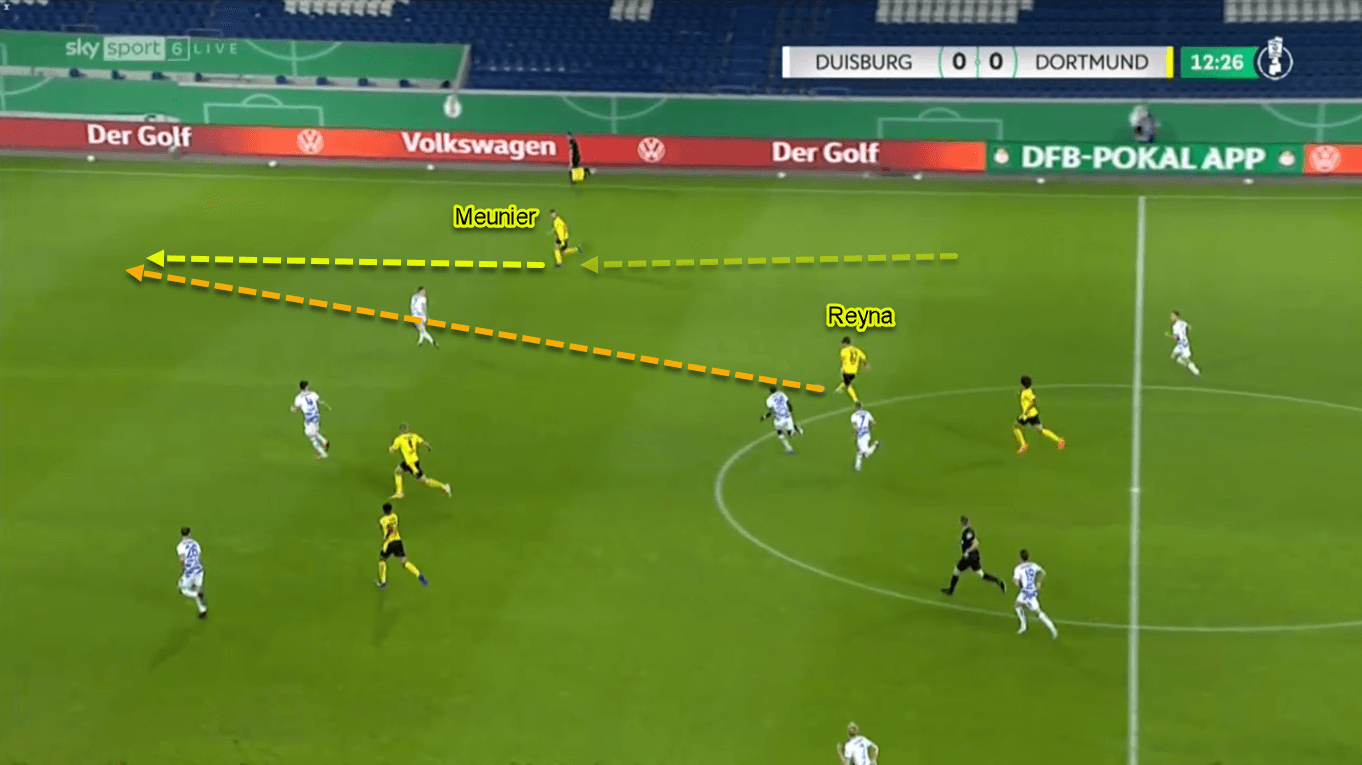
Last but not least, in the final third. Dortmund are blessed to have a very explosive forward in Håland. His playing style relies heavily on lots of runs in behind and accurate first-time finishes. The Norwegian’s offensive tendencies compensate perfectly with Reyna’s skillsets. It means that Reyna is often able to find Håland from time to time with well-weighted through-balls into the box.
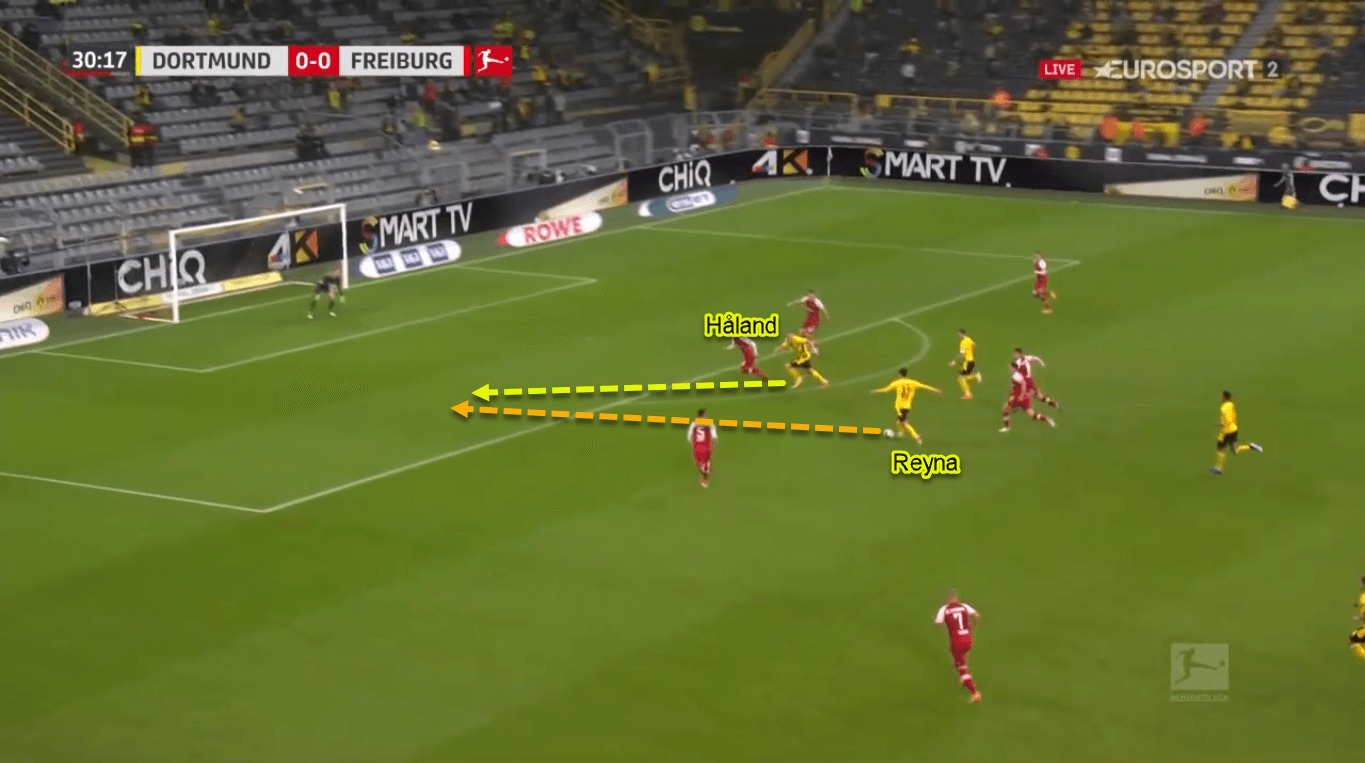
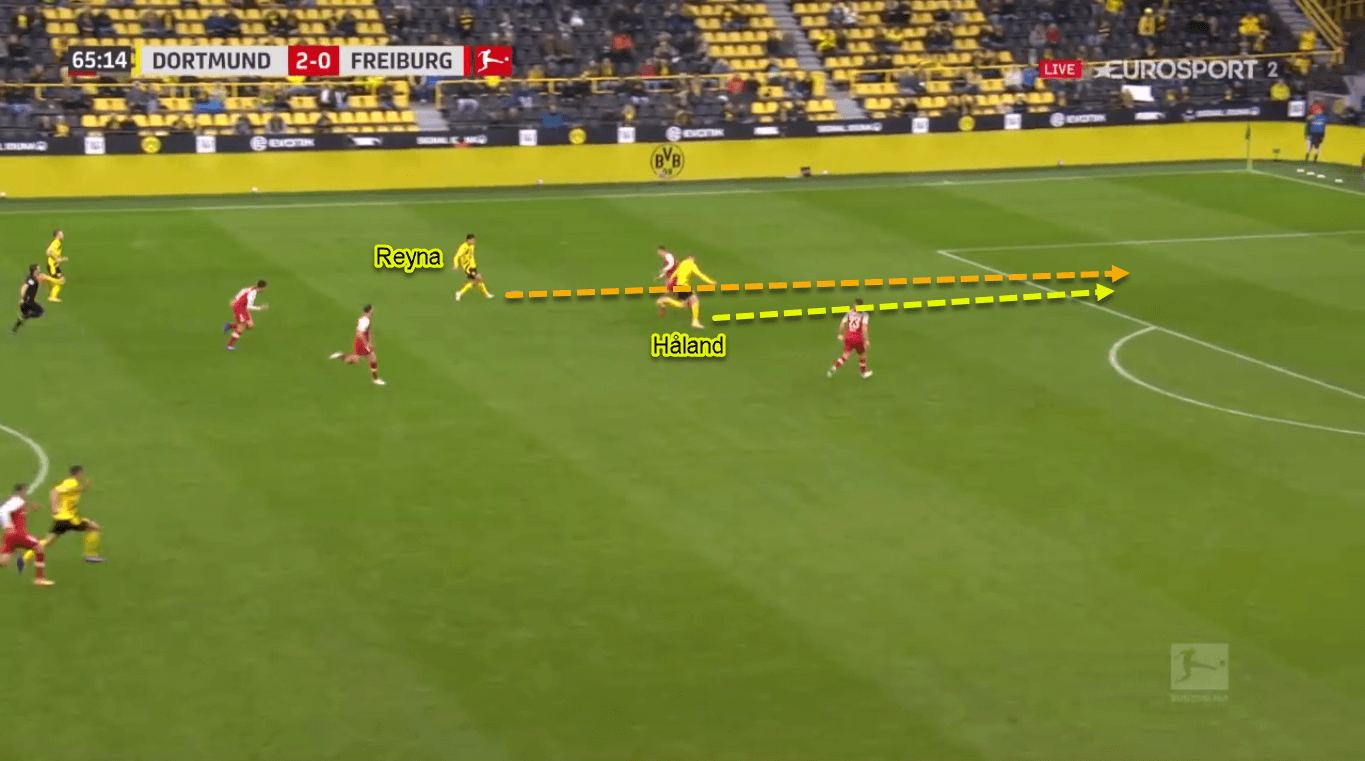
Potential issues
Despite all his talents in such a tender age, Reyna still has some issues that he needs to fix. The first being his tendency to control the ball with a heavy touch. It means that Reyna is sometimes unable to perfectly hug the ball with his feet, thus allowing it to move far away, sometimes closer to the opposition defender(s). This lack of ball control quite often gives the opponent chances to easily tackle the ball out of his possession.
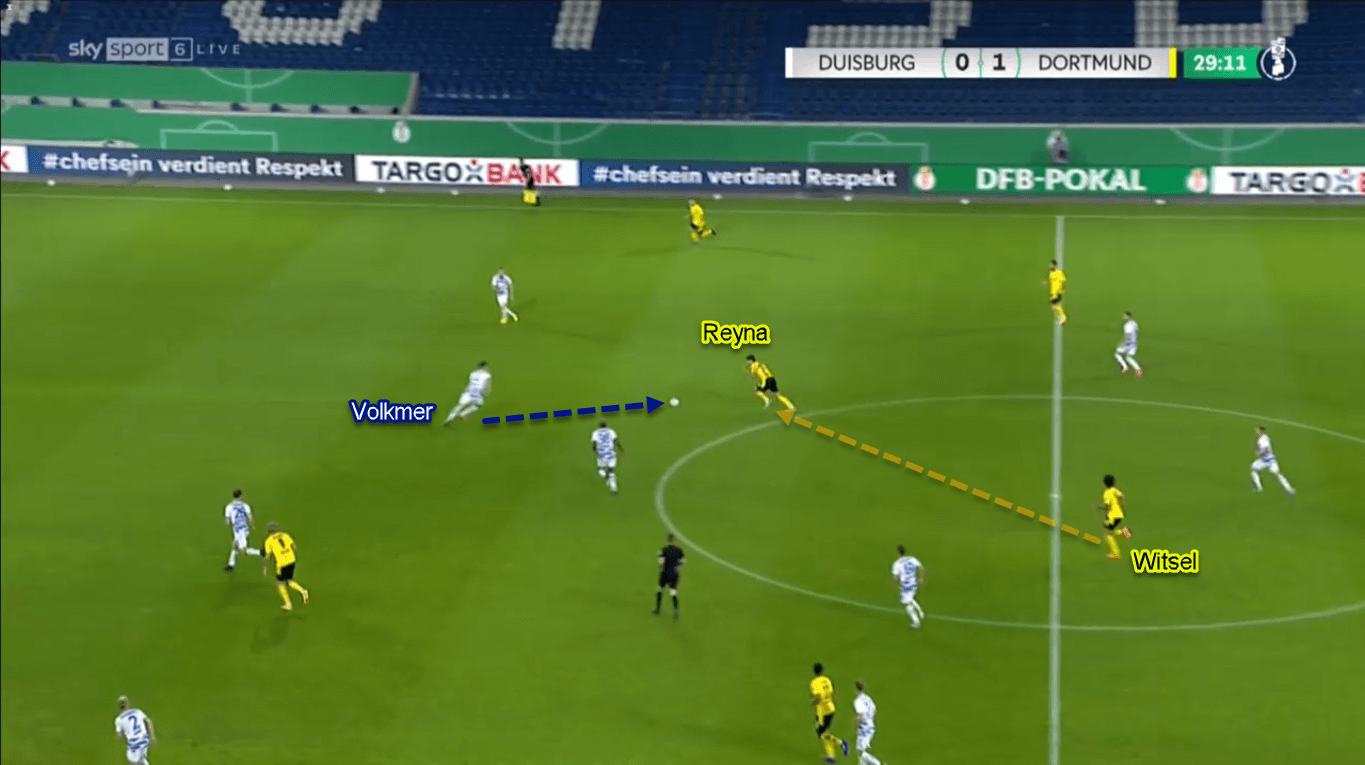
Secondly is his tendency to receive the ball with closed body orientation. It means that there are occasions where Reyna has received the ball inside the opponents’ defensive block, yet he faces the wrong way. This makes him unable to connect with his attacking comrades in advanced areas. Even worse, this can also force his team to play backwards and even lose the ball.
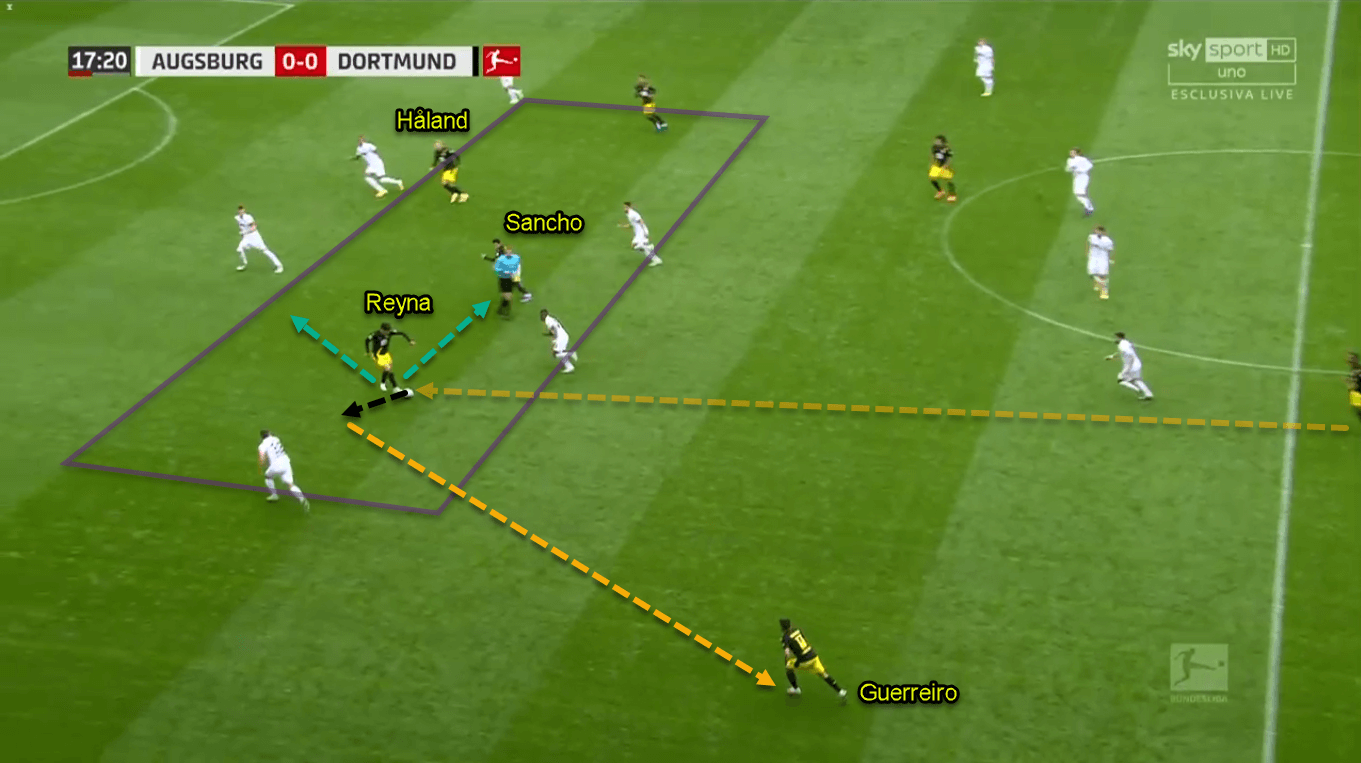
On one hand, Reyna’s potential problems seem ironic for an attacking midfielder. However, we have to realise that he only recently turned 18 in mid-November. His issues as pointed above are quite common among his age peers. We believe that through more minutes and mentoring from the likes of Marco Reus, Sancho, and co., he can fix those issues just within months.
Final thoughts
Gio Reyna is the real deal, as the analysis above suggests. Excuse us for exaggerating a bit, but honestly, we probably have never seen a 17-year-old with a higher ceiling than this. It’s no wonder why Gregg Berhalter has called him to the national team to play alongside his predecessor, Pulisic.
Can Reyna be better than his father? Will the teenager surpass Pulisic’s impact for Die Borussen? Can he be the next American to win the Champions League after Jovan Kirovski (also with Dortmund) in 1997? Only time will tell us the answers.

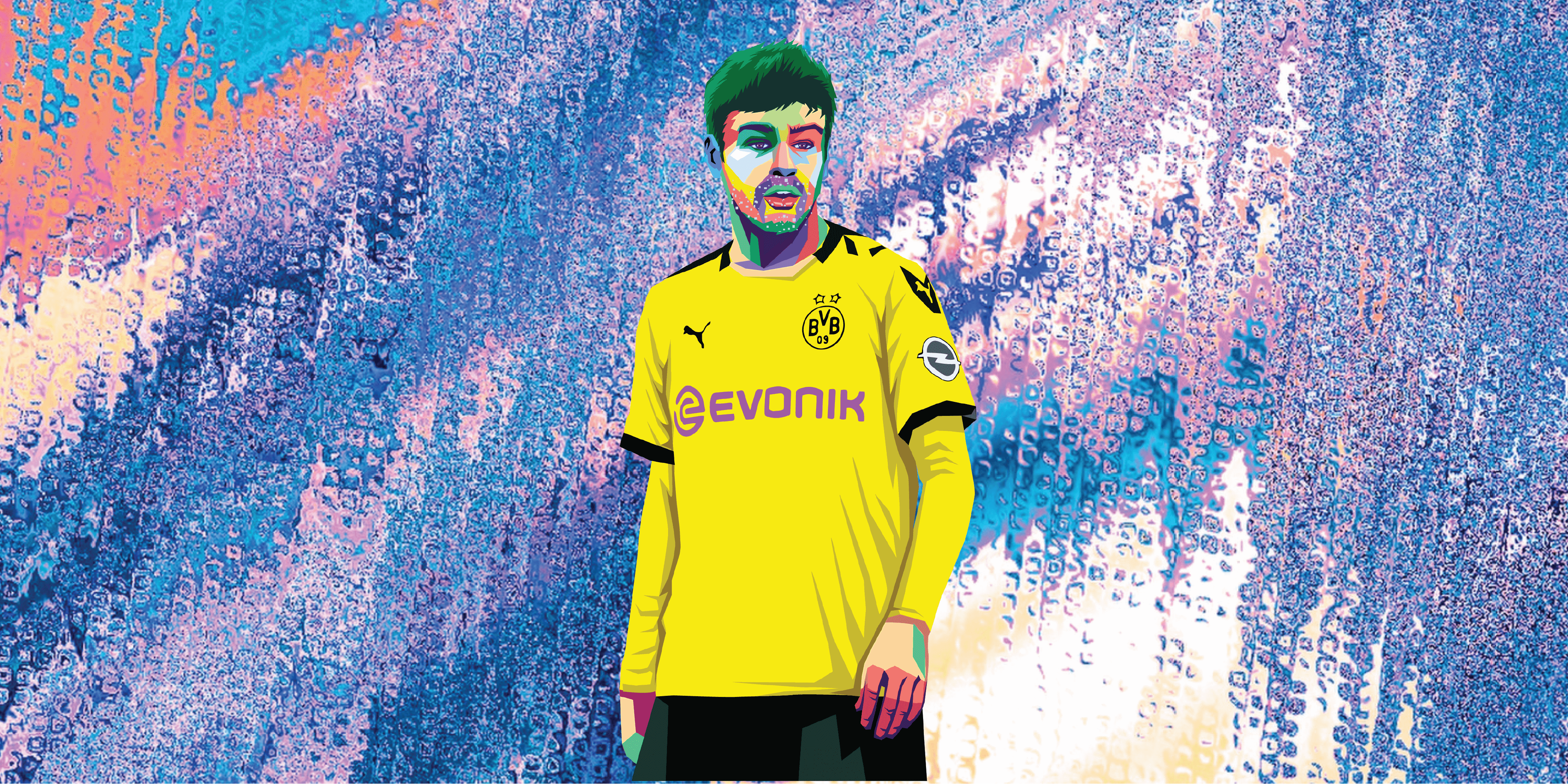



Comments